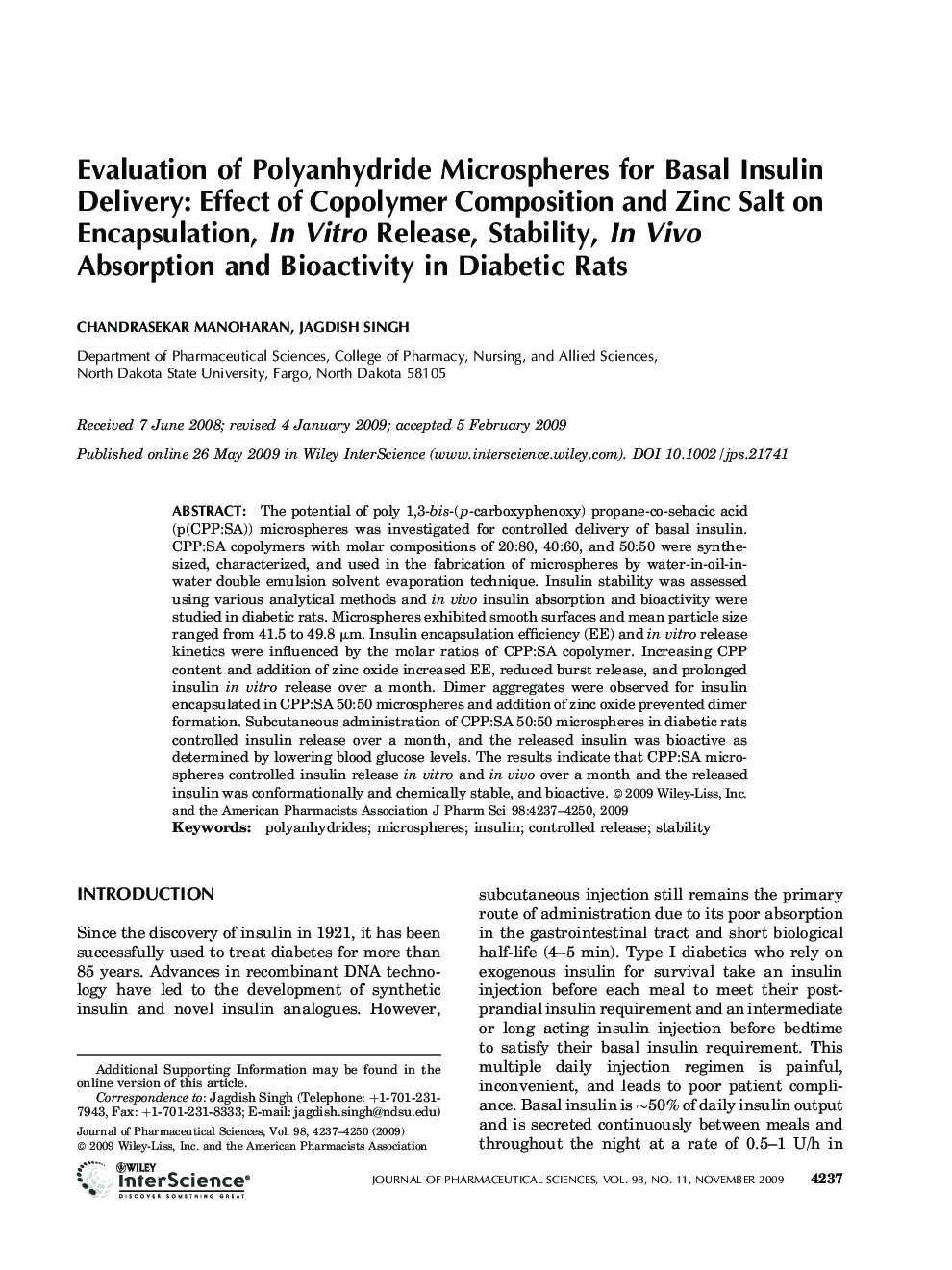| Article ID | Journal | Published Year | Pages | File Type |
|---|---|---|---|---|
| 2486955 | Journal of Pharmaceutical Sciences | 2009 | 14 Pages |
Abstract
The potential of poly 1,3-bis-(p-carboxyphenoxy) propane-co-sebacic acid (p(CPP:SA)) microspheres was investigated for controlled delivery of basal insulin. CPP:SA copolymers with molar compositions of 20:80, 40:60, and 50:50 were synthesized, characterized, and used in the fabrication of microspheres by water-in-oil-in-water double emulsion solvent evaporation technique. Insulin stability was assessed using various analytical methods and in vivo insulin absorption and bioactivity were studied in diabetic rats. Microspheres exhibited smooth surfaces and mean particle size ranged from 41.5 to 49.8 µm. Insulin encapsulation efficiency (EE) and in vitro release kinetics were influenced by the molar ratios of CPP:SA copolymer. Increasing CPP content and addition of zinc oxide increased EE, reduced burst release, and prolonged insulin in vitro release over a month. Dimer aggregates were observed for insulin encapsulated in CPP:SA 50:50 microspheres and addition of zinc oxide prevented dimer formation. Subcutaneous administration of CPP:SA 50:50 microspheres in diabetic rats controlled insulin release over a month, and the released insulin was bioactive as determined by lowering blood glucose levels. The results indicate that CPP:SA microspheres controlled insulin release in vitro and in vivo over a month and the released insulin was conformationally and chemically stable, and bioactive. © 2009 Wiley-Liss, Inc. and the American Pharmacists Association J Pharm Sci 98:4237-4250, 2009
Related Topics
Health Sciences
Pharmacology, Toxicology and Pharmaceutical Science
Drug Discovery
Authors
Chandrasekar Manoharan, Jagdish Singh,
